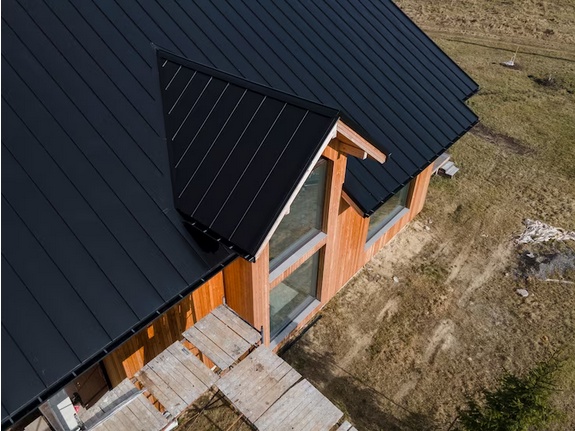Insulation for pitched roof is a crucial element in maintaining energy efficiency, comfort, and structural integrity in residential and commercial buildings. Whether you're constructing a new home, renovating an existing one, or simply looking to upgrade your roof insulation, understanding the various aspects of pitched roof insulation is essential. In this comprehensive guide, we will explore the importance of roof insulation, the types of insulation materials available, installation methods, and the benefits it offers to your property.
Why is Pitched Roof Insulation Important?
Pitched roof insulation plays a pivotal role in ensuring a comfortable and energy-efficient living or working environment. Here are several reasons why it is crucial:
-
Energy Efficiency: Proper insulation minimizes heat loss during cold seasons and heat gain during hot seasons. This means your heating and cooling systems don't have to work as hard, reducing energy consumption and lowering utility bills.
-
Comfort: Insulation creates a consistent indoor temperature, eliminating drafts, and providing a comfortable living or working space. It also helps prevent condensation, which can lead to mold growth and structural damage.
-
Cost Savings: While there may be an initial investment in insulation, it pays for itself through reduced energy costs. Additionally, it lowers maintenance expenses related to moisture damage and improves overall property value.
-
Environmental Impact: Decreased energy consumption contributes to reducing greenhouse gas emissions, making insulation a sustainable choice for environmentally conscious individuals.
Types of Insulation Materials:
Several insulation materials are suitable for pitched roofs, each with its unique characteristics. The choice of material depends on factors like budget, insulation needs, and local climate conditions. Common insulation materials for pitched roofs include:
-
Fiberglass Insulation: Fiberglass is one of the most widely used insulation materials. It is cost-effective, easy to install, and provides good thermal performance. Fiberglass insulation comes in batts or rolls and can be placed between roof joists or rafters.
-
Cellulose Insulation: Made from recycled paper treated with fire retardants, cellulose insulation is an eco-friendly option. It is blown or sprayed into the roof cavity and offers excellent thermal performance.
-
Foam Board Insulation: Rigid foam boards, such as extruded polystyrene (XPS) and polyisocyanurate, provide high insulation value per inch of thickness. They are often used for roofs with limited space for insulation.
-
Spray Foam Insulation: Spray foam insulation creates a seamless, airtight barrier that offers superior thermal performance. It can be applied directly to the underside of the roof sheathing or between rafters.
-
Mineral Wool Insulation: Mineral wool is a fire-resistant insulation material made from rock or slag. It provides good thermal and acoustic insulation and is often used in areas prone to high temperatures or fire risks.
Installation Methods:
The method of installing insulation in a pitched roof depends on whether you're working with a new build or a retrofit project. Here are the two primary installation methods:
-
Warm Roof Insulation: In this method, insulation is installed above the rafters or on the outer layer of the roof structure. It creates a warm and insulated space within the roof structure, preventing heat loss through the roof. Warm roof insulation is often preferred in new constructions as it eliminates the risk of condensation in the roof cavity.
-
Cold Roof Insulation: Cold roof insulation involves placing insulation between the ceiling joists, just above the ceiling of the living space. This method is common in older buildings or retrofit projects where it may be challenging to access the roof structure. While it can be cost-effective, it may not provide the same level of thermal performance as warm roof insulation.
Benefits of Pitched Roof Insulation:
Investing in pitched roof insulation offers a multitude of benefits for your property:
-
Energy Savings: Proper insulation reduces the need for heating and cooling, leading to lower energy bills.
-
Improved Comfort: Insulation maintains consistent indoor temperatures, eliminates drafts, and ensures a comfortable living or working environment.
-
Moisture Control: Insulation helps prevent condensation and moisture buildup, reducing the risk of mold and structural damage.
-
Long-Term Durability: Insulation can extend the lifespan of your roof by protecting it from moisture-related damage and temperature extremes.
-
Environmental Responsibility: Reduced energy consumption contributes to a smaller carbon footprint, making insulation an environmentally responsible choice.
Conclusion:
Insulation for pitched roofs is an essential aspect of modern construction and renovation projects. It not only enhances energy efficiency and comfort but also contributes to long-term property durability and sustainability. Choosing the right insulation material and installation method depends on various factors, including budget, climate, and project specifics. Whether you opt for fiberglass, cellulose, foam board, spray foam, or mineral wool insulation, the benefits of a well-insulated pitched roof are clear: reduced energy bills, increased comfort, and a positive impact on the environment. So, when planning your next roofing project, consider insulation as a vital component in creating a better, more efficient, and sustainable living or working space.


No comments yet